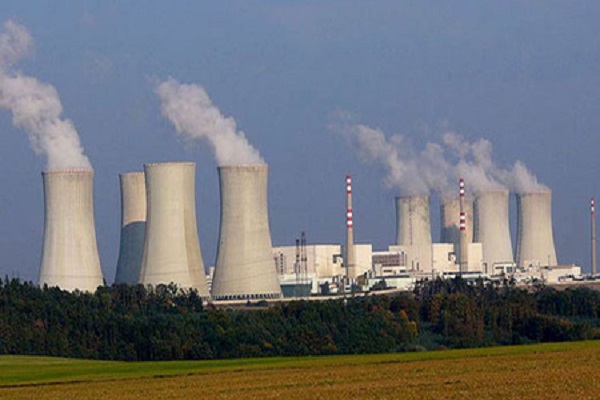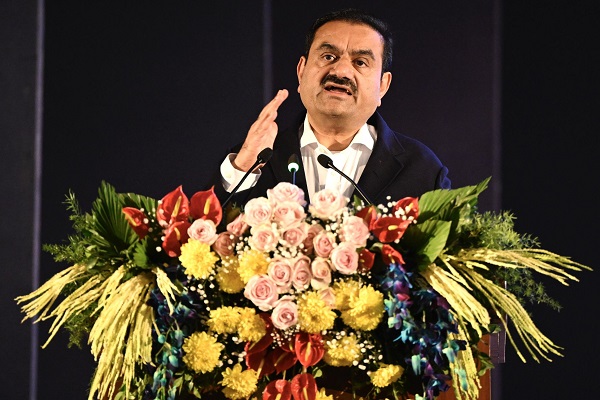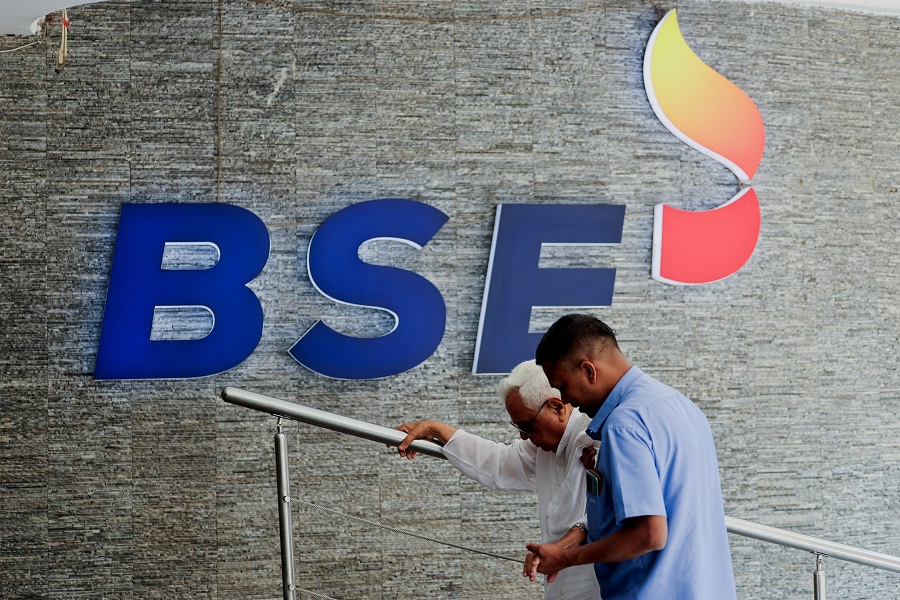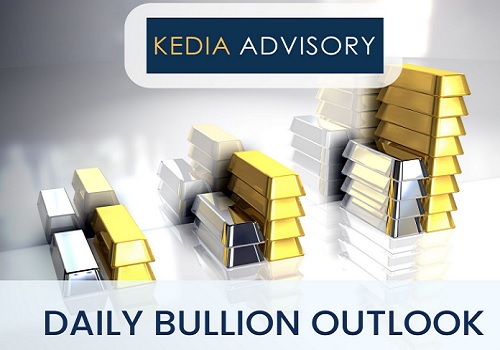Aluminium trading range for the day is 238.2-248.2. - Kedia Advisory

Gold
Gold prices declined sharply by 1.48% to settle at Rs.92,265, weighed down by easing trade tensions between the U.S. and China, which reduced the metal’s safe-haven appeal. The temporary reduction in tariffs by both nations for a 90-day period helped calm investor nerves over prolonged trade disruptions. Additionally, softer-than-expected U.S. inflation data, with the annual rate easing to 2.3% in April—the lowest since February 2021—reinforced expectations of a potential Federal Reserve rate cut, typically supportive for non-yielding assets like gold. Despite the price dip, global investment interest in gold remains robust. The World Gold Council reported net inflows of 115 tons into gold ETFs in April, the largest in over three years and the fifth straight monthly increase, with China contributing nearly 65 tons. However, physical demand was mixed. Indian dealers were seen offering discounts up to $16/oz due to weak local demand as a weaker rupee pushed prices near record highs. Global gold demand edged up by 1% year-on-year in Q1 2025 to 1,206 metric tons, mainly driven by a 170% surge in investment demand. Bar and coin demand rose 12% in China but fell globally due to a 32% drop in coin purchases and a 21% dip in central bank buying. Jewellery demand declined 21% amid high prices. Technically, gold is under long liquidation as open interest dropped 4.35% to 11,867. Immediate support lies at Rs.91,635, with a further downside to Rs.91,005. Resistance is seen at Rs.93,280; a break above may push prices toward Rs.94,295.
Trading Ideas:
* Gold trading range for the day is 91005-94295.
* Gold fell as easing trade tensions between the US and China continued to weigh.
* Annual US inflation rate eased to 2.3% in April—the lowest since February 2021 and below market expectations of 2.4%.
* Gold ETFs recorded net inflows of 115 tons in April—the fifth consecutive monthly increase and the largest in over three years.
Silver
Silver prices declined by 1.34% to settle at Rs.95,466, as renewed optimism around global trade dampened the metal's safe-haven appeal. The easing of trade tensions between the U.S. and China, including a 90-day pause on tariff hikes and direct involvement by President Trump and President Xi in deal negotiations, improved risk sentiment and pulled investors toward riskier assets. Further pressure came from softer-than-expected U.S. inflation data. Consumer price inflation in April eased to 2.3%, its lowest level since February 2021, and slightly missed market expectations. This reinforced hopes of potential interest rate cuts, which typically support bullion but were offset by the broader shift in sentiment. Despite the price drop, the longer-term fundamentals for silver remain bullish. The market is expected to post a significant supply deficit for the fifth consecutive year in 2025, with industrial demand forecast to hit record highs—projected to surpass 700 million ounces. This surge is driven by the green economy sector, where silver's use in solar panels and electronics continues to expand. Physical investment is also expected to grow by 3%, particularly in Europe and North America, while jewelry demand is anticipated to decline by 6%, led by a notable drop in India due to high domestic prices. Technically, silver is under fresh selling pressure with open interest jumping 16.2% to 20,218, indicating new short positions. Immediate support lies at Rs.94,645, with a break below likely testing Rs.93,820. On the upside, resistance is seen at Rs.96,675; a move above this level could open the path toward Rs.97,880.
Trading Ideas:
* Silver trading range for the day is 93820-97880.
* Silver prices dropped as rising trade optimism boosted risk appetite.
* Washington and Beijing agreed to reduce tariffs drastically and adopted a 90-day pause while the details are being worked out.
* U.S. President Donald Trump said that "potential deals" with India, Japan and South Korea were in the works.
Crude oil
Crude oil prices edged lower by 0.22% to settle at Rs.5,418 as traders booked profits amid a surprise build in U.S. crude inventories and growing concerns over demand outlook. According to the Energy Information Administration (EIA), U.S. crude stocks rose by 3.5 million barrels to 441.8 million barrels in the week ending May 9, exceeding market expectations. The build was also confirmed by the American Petroleum Institute, which reported a 4.29 million barrel increase, the largest since March. However, gasoline and distillate inventories showed declines of 1 million and 3.2 million barrels, respectively, suggesting robust fuel consumption ahead of the summer driving season. On the supply side, OPEC+ production in April rose marginally by 25,000 barrels per day (bpd), significantly lower than the planned increase of 138,000 bpd. OPEC also revised its 2025 forecast for non-OPEC+ output growth down to 800,000 bpd from 900,000 bpd, citing weaker output expectations from countries like the U.S. Despite this, OPEC+ is anticipated to boost production further post its June 1 meeting. Meanwhile, the International Energy Agency (IEA) warned that global oil supply could outpace demand by 600,000 bpd this year, with the surplus potentially expanding further depending on OPEC+ policy actions. Technically, the crude oil market is under long liquidation, with open interest dropping sharply by 23.43% to 9,759. Immediate support is seen at Rs.5,370, and a break below could lead to a test of Rs.5,321. Resistance is likely at Rs.5,452, with potential upside toward Rs.5,485 if breached.
Trading Ideas:
# Crudeoil trading range for the day is 5321-5485.
# Crude dips on profit-taking, surprise US stock build, and demand worries.
# OPEC lowered its 2025 forecast for non-OPEC+ output growth to 800,000 bpd, down from 900,000 bpd.
# OPEC+ production rose only slightly in April, increasing by 25,000 bpd versus a planned 138,000 bpd.
Natural gas
Natural gas prices declined by 3.42% to settle at Rs.299.3, weighed down by lowered demand projections for the upcoming two weeks. This weakness stems in part from reduced gas flows to major LNG export facilities undergoing seasonal maintenance. Average LNG feedgas demand has dipped to 15.1 bcfd so far in May, down from April’s record of 16.0 bcfd. Maintenance-related slowdowns at Cameron LNG in Louisiana and Cheniere’s Corpus Christi terminal in Texas, where flows fell to a two-month low of 1.5 bcfd, have significantly reduced export activity. Despite this temporary pullback, the U.S. Energy Information Administration (EIA) maintains a bullish medium-term outlook. Prices are expected to rise in the coming months, driven by increased LNG exports and seasonal electricity demand. The U.S. remains the top global LNG exporter, with robust international demand continuing to support the market. On the storage front, U.S. utilities added 104 Bcf of gas during the week ending May 2, bringing total stocks to 2,145 Bcf. Although this is 16.1% below last year's levels, it remains 1.4% above the five-year average, keeping inventories within a stable range. The EIA projects record-high dry gas production and consumption for 2025, with output expected to reach 104.9 bcfd. Technically, the market is under fresh selling pressure as open interest rose 8.02% to 14,072. Immediate support lies at Rs.295.3, with further downside potential to Rs.291.4. Resistance is seen at Rs.305.8; a break above this could lead to a retest of Rs.312.4.
Trading Ideas:
* Naturalgas trading range for the day is 291.4-312.4.
* Natural gas fell on lower demand outlook, reduced LNG flows from maintenance.
* Average LNG feedgas fell to 15.1 bcfd so far in May from a record of 16.0 bcfd in April.
* Gas output in the Lower 48 states slipped to 103.7 bcfd so far in May from 105.8 bcfd in the previous month.
Copper
Copper prices closed marginally lower by 0.05% at Rs.859.7, as traders weighed the short-term relief from the US-China trade truce against persistent concerns of global oversupply. The temporary agreement between Washington and Beijing to reduce tariffs to 30% and 10%, respectively, for a 90-day period helped ease trade tensions, but uncertainty about a longer-term resolution continues to cloud market sentiment. Meanwhile, the International Copper Study Group (ICSG) doubled its 2024 global surplus forecast to nearly 300,000 tonnes, underlining market fears of a supply glut due to robust ore production, especially from South America. On the demand side, China's macroeconomic stimulus—including a 10 basis point interest rate cut and a 50 basis point reduction in banks' reserve requirement ratio—offers a cushion to consumption prospects. However, trade flows reflect shifting dynamics. China's imports of unwrought copper and copper products in April remained flat at 438,000 metric tons year-on-year, while cumulative imports from January to April fell 3.9%. Much of this may be linked to traders redirecting shipments to the U.S. in anticipation of tariff changes, leading to a 61% surge in COMEX stocks since March-end, reaching their highest level since October 2018. Refined copper market data continues to show a surplus, albeit narrowing—from 90,000 metric tons in January to 61,000 tons in February. Technically, copper remains under long liquidation as open interest fell 7% to 4,705. Immediate support is at Rs.855.4, with further downside risk to Rs.850.9. Resistance is seen at Rs.864.7, and a breakout could lead to a test of Rs.869.5.
Trading Ideas:
* Copper trading range for the day is 850.9-869.5.
* Copper settled flat as investors assessed the broader economic implications of the temporary US-China trade agreement.
* Washington and Beijing agree to reduce tariffs to 30% and 10% respectively for a 90-day period
* However, ample ore production from South America has exacerbated the market’s surplus outlook.
Zinc
Zinc prices climbed by 1.8% to settle at Rs.260.55, buoyed by improved investor sentiment following a 90-day truce on tariff escalations between the U.S. and China. This easing of trade tensions alleviated fears of a global economic slowdown, fostering hopes for sustained demand for industrial metals. Further support came from a weakening U.S. dollar, which fell after U.S. consumer inflation came in below expectations, increasing the likelihood of Federal Reserve rate cuts and boosting the appeal of commodities priced in dollars. In China, while new bank loans dropped sharply in April, total social financing rose 8.7% year-on-year—hitting a 13-month high—suggesting renewed government stimulus and robust infrastructure spending, both positive indicators for zinc consumption. On the supply side, zinc treatment charges (TCs) have risen globally, particularly with new mining capacity from Russia and the Democratic Republic of Congo entering the market. According to the International Lead and Zinc Study Group (ILZSG), the global refined zinc market is expected to post a surplus in 2025, with demand rising 1% to 13.64 million tons and supply increasing by 1.8% to 13.73 million tons. Technically, zinc is under fresh buying pressure, supported by a 2.91% rise in open interest to 2,121. Immediate support lies at Rs.256.8, with a break potentially testing Rs.252.9. On the upside, resistance is seen at Rs.263.5, with the next target at Rs.266.3.
Trading Ideas:
* Zinc trading range for the day is 252.9-266.3.
* Zinc up as US-China 90-day tariff pause boosts hopes for demand, averts recession.
* Providing further support, the U.S. dollar extended losses following its biggest decline in more than three weeks.
* Global refined zinc demand is forecast to rise by 1% to 13.64 million tons this year
Aluminium
Aluminium prices rose by 1.79% to settle at Rs.243.95, supported by renewed optimism over global trade stability following a 90-day truce on tariff escalations between the US and China. The temporary easing of trade tensions has lifted hopes for a steady manufacturing outlook, particularly in China, where factory activity is highly sensitive to international trade conditions. China’s aluminium production in April 2025 grew by 2.6% year-on-year but declined by 2.9% month-on-month. This moderation in output is partly attributed to producers approaching Beijing’s annual production cap of 45 million tons. Additionally, the share of liquid aluminium in total output dipped slightly by 0.52 percentage points to 74%, indicating some moderation in direct-use aluminium production. Looking ahead, high levels of domestic operating capacity are expected to be maintained, with new capacity from a replacement project in Shandong likely to begin output in May and further expansion expected in Q3 from Yunnan. On the supply chain side, the increased availability of alumina—especially from Southeast Asia—has helped ease previous input shortages and reduce production costs. Meanwhile, aluminium inventories at Japan’s three major ports rose by 3.4% month-on-month in April to 320,300 metric tons, indicating healthy regional supply. Technically, the market is experiencing short covering, with open interest dropping by 3.77% to 3,805 as prices gained Rs.4.3. Aluminium now finds support at Rs.241.2, with a break potentially testing Rs.238.2. On the upside, resistance lies at Rs.246.2, and a move above could open the door to Rs.248.2.
Trading Ideas:
* Aluminium trading range for the day is 238.2-248.2.
* Aluminium gains on hopes of steady US-China trade, boosting manufacturing view.
* US and China agreed to lower tariffs against each other for the upcoming three months, supporting demand for Chinese factories.
* Japan's April aluminium stocks rise 3.4% m/m in April
Cottoncandy
Cottoncandy prices rose by 0.89% to settle at Rs.54,630, supported by a downward revision in domestic production estimates and firm demand outlook. The Cotton Association of India (CAI) lowered its crop forecast by 4 lakh bales to 291.30 lakh bales for the 2024–25 season, mainly due to reduced output in Maharashtra. This cut marks a shift from earlier estimates of 295.30 lakh bales and reflects the impact of unfavorable conditions affecting yields. The total cotton supply till March-end is estimated at 306.83 lakh bales, which includes 25 lakh bales of imports and opening stocks of 30.19 lakh bales. Despite the increased supply, closing stocks for the season ending in September 2025 are projected lower at 23.49 lakh bales, compared to 30.19 lakh bales a year earlier. This reflects sustained consumption and tighter ending inventories. Moreover, India’s cotton imports are seen more than doubling to 33 lakh bales from last season’s 15.20 lakh bales, in anticipation of further domestic supply shortfalls. On the global front, the U.S. cotton balance sheet reflects a reduction in exports and an increase in ending stocks. Meanwhile, world cotton production, consumption, and trade have been trimmed, with a net decline in output and mill use, especially in China and Indonesia. Technically, the market is witnessing fresh buying with a 0.41% rise in open interest to 242, and a price gain of Rs.480. Support lies at Rs.54,250, with further downside risk to Rs.53,880. Resistance is seen at Rs.54,940, and a breakout could push prices towards Rs.55,260.
Trading Ideas:
* Cottoncandy trading range for the day is 53880-55260.
* Cotton prices gained as CAI expects a shrinkage in the domestic crop further.
* Cotton exports for the 2024-25 season are pegged at 16 lakh bales, lower by 12.36 lakh bales over previous year’s 28.36 lakh bales.
* The closing stock for 2024-25 season at end of September 2025 is estimated lower at 23.49 lakh bales from same period last year’s 30.19 lakh bales. I
* In Rajkot, a major spot market, the price ended at 26082.25 Rupees dropped by -0.02 percent.
Turmeric
Turmeric prices edged lower by 0.22% to settle at Rs.14,484, primarily pressured by increased arrivals and subdued export demand. Total arrivals surged to approximately 57,500 quintals, nearly doubling from the previous session's 29,860 quintals, indicating increased farmer participation. Despite the price decline, the downside appears limited due to ongoing concerns over lower production estimates and slow arrivals from key growing regions. Although turmeric cultivation area has expanded by 10% this season to 3.30 lakh hectares from last year’s 3 lakh hectares, actual output is unlikely to see a corresponding rise. Untimely rains and adverse weather conditions, especially in regions like Nanded, have impacted crop development, leading to expectations of a 10–15% decline in yield. On the trade front, turmeric exports for April–February 2025 rose 11.51% year-on-year to 161,229.56 tonnes, reflecting steady global demand. However, February 2025 exports dropped slightly by 2.97% compared to the same month in 2024. Imports also showed a notable rise of 55.21% during April–February 2025, reaching 20,814.63 tonnes, although February 2025 imports declined sharply by over 52% compared to February 2024. From a technical perspective, the market witnessed fresh selling pressure as open interest increased by 1.57% to 15,870 contracts, even as prices declined Rs.32. Turmeric is now finding support at Rs.14,362, with further downside potential toward Rs.14,238. On the upside, resistance is seen at Rs.14,610, and a break above this could push prices toward Rs.14,734.
Trading Ideas:
* Turmeric trading range for the day is 14238-14734.
* Turmeric dropped due to increased arrivals and owing to weak export enquiries.
* Total arrivals rose to around 57,500 quintals, up significantly from 29,860 quintals in the previous session.
* However downside seen limited as persistent concerns about low arrivals and lower production estimates.
* In Nizamabad, a major spot market, the price ended at 14576.95 Rupees gained by 0.12 percent.
Jeera
Jeera prices slipped by 0.41% to settle at Rs.21,865 amid muted domestic and export demand. The decline was primarily attributed to the end of the retail season and persistent inaction from foreign buyers, which has dampened overall market sentiment. Furthermore, a rise in total arrivals to 32,900 bags from the previous session’s 28,000 bags added supply-side pressure, contributing to the price dip. Despite the weak market tone, the broader supply scenario remains stable, with an estimated 20 lakh bags still held by farmers. However, trade activity is expected to remain subdued, with only 3–4 lakh bags likely to be traded before the season ends, leaving a substantial carry-forward stock of about 16 lakh bags. On the production side, cumin sowing was delayed by about a month due to unfavorable weather in major producing states like Gujarat and Rajasthan. Still, the current crop is expected to match last year’s output, supported by favorable growing conditions. On the trade front, jeera exports surged by 62.55% year-on-year during April–February 2025 to 195,164.58 tonnes. However, February 2025 saw a month-on-month decline of 23.92% in exports, although still showing an 18.52% rise from February 2024. Technically, the market is witnessing fresh selling, as reflected by a 5.93% rise in open interest to 6,057 contracts while prices dropped Rs.90. Jeera finds support at Rs.21,750, with further downside possible toward Rs.21,620. Resistance is seen at Rs.22,020, and a break above could test Rs.22,160.
Trading Ideas:
* Jeera trading range for the day is 21620-22160.
* Jeera dropped due to lower buying from domestic buyers and subdued export demand.
* Pressure also seen due to comfortable supplies and tepid export interest amid adequate existing stocks.
* In Feb 2025 around 12,996.88 tonnes of jeera were exported as against 17,083.31 tonnes in Jan 2025 showing a drop of 23.92%.
* In Unjha, a major spot market, the price ended at 22325.2 Rupees dropped by -0.32 percent.
Views express by all participants are for information & academic purpose only. Kindly read disclaimer before referring below views





















